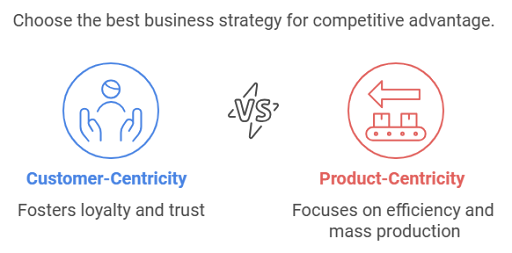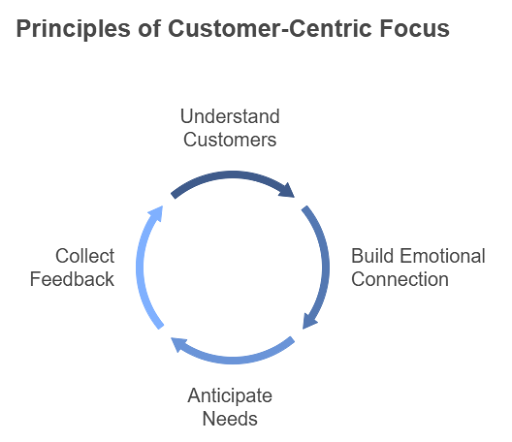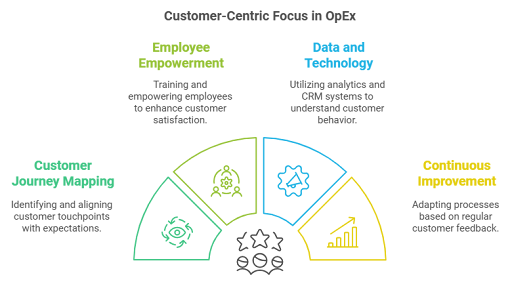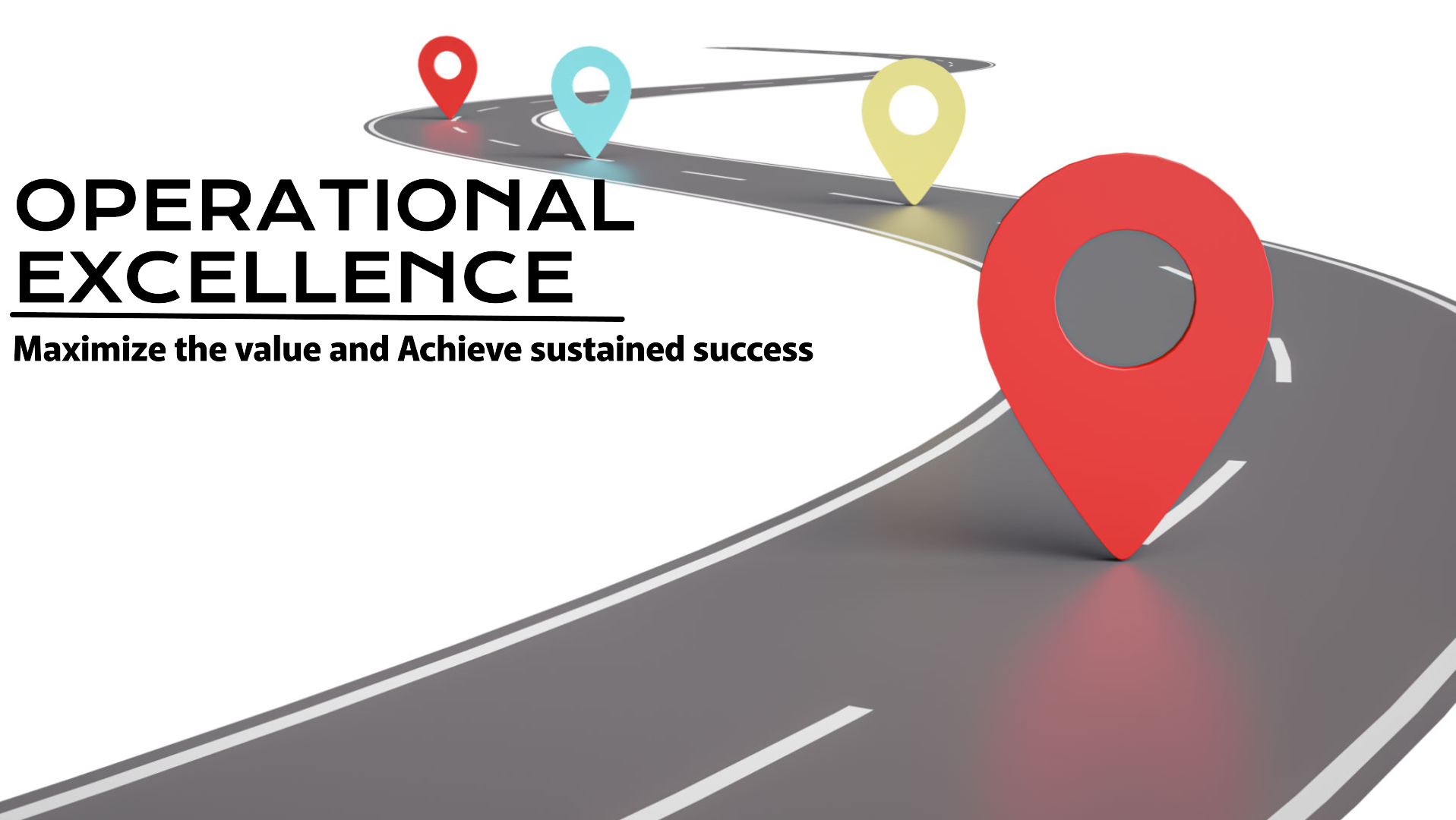The role of Customer Centricity in Operational Excellence
In today’s dynamic and competitive business landscape, customer-centricity has evolved from being a desirable trait to a fundamental business strategy. At its core, a customer-centric approach revolves around prioritizing the needs, preferences, and expectations of customers at every level of the organization. It is about designing processes, strategies, and innovations with the customer as the focal point, ensuring that their satisfaction and loyalty are consistently nurtured. Businesses that embrace this philosophy often outperform their competitors because they cultivate deep connections with their audience, fostering trust and long-term relationships.
Defining Customer-Centricity
Customer-centricity is more than just offering exceptional customer service. It entails a strategic alignment where the entire organization—marketing, operations, R&D, sales, and after-sales—works collaboratively to meet and exceed customer expectations. It involves creating products and services that solve real problems, providing support that goes beyond transactional interactions, and ensuring that customers feel valued at every touchpoint. This focus is deeply integrated into the company culture, where employees at all levels understand their role in delivering superior customer experiences.
The Evolution of Customer Centricity
Historically, businesses operated in a product-centric framework, emphasizing mass production, efficiency, and economies of scale. While these principles drove growth during the industrial era, they often overlooked the nuanced needs of individual customers. The shift towards customer-centricity gained momentum with the advent of globalization and digital transformation, which democratized access to information and expanded customer choices. Today, empowered customers demand personalized experiences, instant gratification, and ethical business practices. Organizations that fail to meet these expectations risk losing their competitive edge.

Why Customer-Centricity Matters in Operational Excellence
1- Value Creation:
Operational excellence aims to eliminate waste and streamline processes. However, these efforts must align with delivering value as defined by the customer. A process might appear efficient internally, but may not necessarily translate into customer satisfaction. By prioritizing customer needs, organizations ensure that their operational improvements directly enhance value delivery.
2- Enhanced Problem-Solving:
Customer feedback serves as a powerful tool for identifying pain points and inefficiencies. Incorporating customer insights into operational strategies helps organizations address root causes of dissatisfaction, leading to innovative solutions and improved processes.
3- Increased Loyalty and Retention:
A customer-centric approach ensures consistent delivery of quality products and services. When customers feel valued and their expectations are met, they are more likely to stay loyal, reducing churn rates and increasing lifetime value.
4- Competitive Advantage:
In industries where products and services are similar, an exceptional customer experience becomes a differentiator. Organizations that integrate customer-centricity into their operational excellence strategies can outperform competitors by consistently delivering superior value.
5-Increased Revenue and Profitability:
Customer-centric strategies often lead to higher satisfaction rates, which correlate with increased sales, reduced churn, and better cross-selling and upselling opportunities.
6- Improved Brand Reputation:
Companies known for their customer-centricity enjoy strong reputations. This goodwill attracts new customers and strengthens relationships with existing ones.

The Principles of Customer-Centric Focus
- Deep Understanding of Customers: At the heart of customer-centricity lies a profound understanding of who the customers are. This requires gathering and analyzing data about customer demographics, behaviors, preferences, and pain points. Tools like surveys, interviews, focus groups, and advanced analytics enable organizations to gain insights that inform their strategies.
- Understanding of Customers: Successful customer-centric organizations don’t just understand customers intellectually—they connect with them emotionally. By putting themselves in the customer’s shoes, businesses can design solutions that resonate on a personal level, building loyalty and trust.
- Proactive Anticipation of Needs: Customer-centric businesses don’t wait for customers to express their needs; they anticipate them. This involves leveraging predictive analytics and trend analysis to foresee customer demands and deliver solutions before competitors can.
- Continuous Feedback Loops: Customers’ needs and expectations are constantly evolving. Organizations must establish mechanisms to collect and act on feedback in real-time, ensuring their offerings remain relevant and valuable

How to Embed Customer-Centric Focus in OpEx
- Understand the Customer Journey
Mapping the customer journey is a critical step. Identify every touchpoint where customers interact with your brand and assess whether these interactions align with their expectations. Use tools like customer journey mapping and voice-of-the-customer (VoC) initiatives to gain insights. - Empower Employees
Employees play a pivotal role in delivering a customer-centric experience. Train them to understand the importance of customer focus and empower them to make decisions that enhance customer satisfaction. Employees who feel aligned with organizational goals are more likely to deliver exceptional service. - Leverage Data and Technology
Utilize data analytics and customer relationship management (CRM) systems to gain a deeper understanding of customer behavior, preferences, and feedback. Predictive analytics can also help anticipate customer needs, enabling proactive responses. - Iterate and Improve
Operational excellence is a continuous journey. Regularly gather customer feedback and adapt your processes accordingly. Implement mechanisms for real-time feedback and agile decision-making to stay ahead of evolving customer expectations.

Challenges in Implementing Customer-Centricity
Despite its benefits, adopting a customer-centric approach is not without challenges. One of the most significant hurdles is cultural resistance within the organization. Shifting from a product or profit-centric mindset to a customer-focused one requires rethinking existing processes, training employees, and fostering a culture of empathy and collaboration. Additionally, gathering and analyzing customer data can be complex and resource-intensive, especially for organizations lacking technological infrastructure. Lastly, maintaining customer-centricity in the face of external pressures, such as cost-cutting or rapid scaling, requires strong leadership and commitment.
The Future of Customer-Centricity
As customer expectations continue to evolve, businesses must remain agile and adaptive. Emerging technologies like AI, machine learning, and blockchain will further enhance the ability to deliver personalized and secure experiences. Moreover, sustainability and ethical practices are becoming increasingly important to customers, prompting organizations to integrate these values into their customer-centric strategies.
“Case Study: Building a Customer-Centric B2B Organization” by McKinsey & Company: This case study explores how a Chinese steel manufacturer transformed its operations to be more customer-centric, resulting in improved financial performance and customer loyalty.

Customer-centric focus is not just a principle but a business imperative in today’s competitive landscape. When organizations align their operational excellence strategies with customer needs, they unlock the potential for sustainable growth and enduring success. By continuously innovating, listening to feedback, and prioritizing customer satisfaction, businesses can set themselves apart as leaders in their industries.
Ultimately, the essence of operational excellence lies in its ability to deliver what customers truly value consistently, efficiently, and innovatively. Organizations that embrace this principle will not only survive but thrive in an ever-evolving marketplace.

